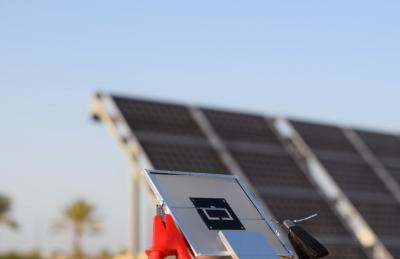KAUST researchers have conducted outdoor tests, that have shown that an increase in temperature affects the performance of a tandem perovskite/silicon solar cell due to voltage losses aw well as current mismatch between the two sub-cells.

The energy yield of two-terminal tandem cells is maximized when the two sub-cells produce the same current at the maximum power point. However, when one of the two devices generates less current than the other, and current mismatch between the sub-cells occurs, the overall device's current is affected.
Reducing the bandgap of the perovskite sub-cell is pointed out as a possible way to reduce the impact of temperature on this type of tandem cells. Ideal bandgaps should be lower than 1.65 electronvolts.
Also, this study reports the temperature coefficient of the industry viable perovskite/silicon tandem solar cells as -0.26% K-1 on double-side textured silicon wafers (with record certified current density of 19.8 mA/cm2). This temperature coefficient value is very close to the silicon heterojunction solar cells (-0.23 % K-1).
The KAUST team is currently working on the scaling-up of perovskite/silicon tandem solar cells targeting power conversion efficiency values beyond the limits of the single-junction solar cells.




Comments
physics
could there is the another possibilities rather than temperature impact on the efficiency of cell, and in which conditions cell shows high efficiency. Hot sunny day are cold day?